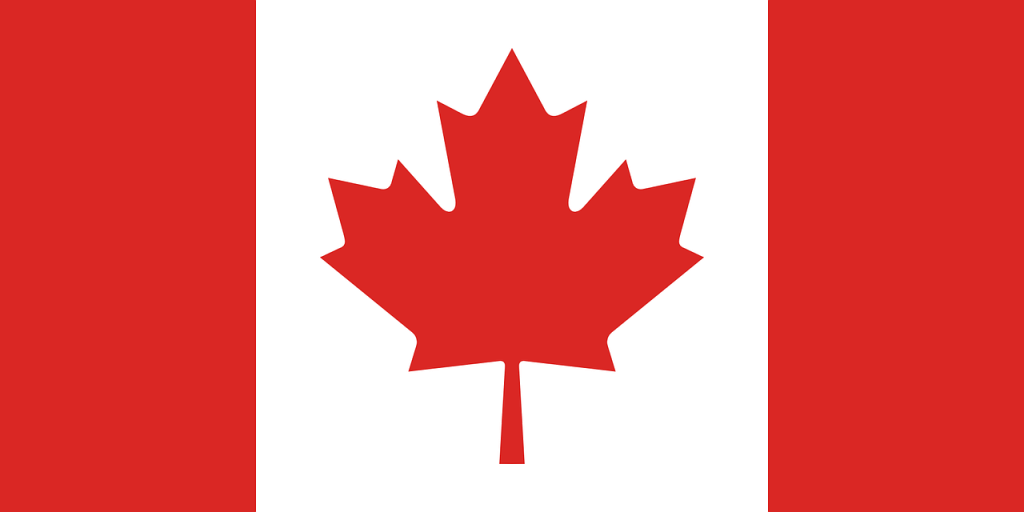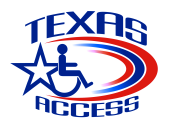Canada has various web accessibility laws and policies as its Government and many provinces are working towards making Canada a more inclusive, barrier-free country.
Quick Facts about Canada’s Web Accessibility Laws

All Canada Web Accessibility Laws Cover Websites, mobile applications, and digital content and adopt WCAG 2.0 AA.
The Accessible Canada Act (Bill C-81) affects Canada’s federal public sector, Crown Corporations, and all federally regulated organizations.
The Accessible Canada Act Deadline: Failure to comply could result in a fine of up to $250,000.
Accessibility for Ontarians with Disabilities Act (AODA) affects public, private, and non-profit organizations in Ontario.
AODA Deadline: Failure of all public websites and web content posted after January 1, 2012, to comply by January 1, 2021, could result in fines of up to $100,000 for corporations or $50,000 for individuals or unincorporated organizations. Failure to comply could also damage an organization’s public image.
The Accessibility for Manitobans Act (AMA) affects public and private sector organizations in Manitoba.
The Nova Scotia Accessibility Act (Bill 59) affects organizations and businesses in Nova Scotia.
Nova Scotia Accessibility Act Deadline: Failure to comply could result in a fine of up to $250,000.
According to Statistics Canada’s report, in 2017, one in five (22%) of the Canadian population aged 15 years and over (roughly 6.2 million individuals) have problems hearing or seeing, or suffer from one form of disability. These categories of people could face some form of limitation or restriction every day if goods, services and information and communications and the technologies are not made to be accessible.
The country has long had laws that prohibit restriction and discrimination of people, including those with a disability (such as the Canadian Human Rights Act of 1977, a non-discrimination law).
It is only recently the Government of Canada moved towards disability-specific laws to ensure goods, services (such as transport and employment), and information and communications technologies are accessible to people with any form of disability.
Canada’s Web Accessibility Laws
The Accessible Canada Act (Bill C-81)
The act to ensure a Barrier-free Canada, Bill C-81, the Accessible Canada Act received unanimous support in the House of Commons in May 2019 and became law after receiving Royal Assent on June 21, 2019.
The act builds on the Canadian Human Rights Act and comprehensive provincial legislation such as the Accessibility for Ontarians with Disabilities Act (AODA), The Accessibility for Manitobans Act (AMA), and the Nova Scotia Accessibility Act.
ACA is a Canada-wide accessibility act aimed at ensuring people with disabilities are not restricted from the procurement of goods and services, built environment, delivering programs and services, employment, transportation, and Information and Communication Technologies (ICT), including digital content and the technologies used to access it.
It directly falls on the Canadian parliament, Canada’s federal public sector, Crown Corporations, Canadian Forces, and all federally regulated organizations including those in the private sector e.g. transportation, telecoms, and banking sectors.
Requirements of the bill will follow the international standard, Web Content Accessibility Guidelines (WCAG) 2.0 Level AA, thus, ensuring web and digital accessibility. The Accessible Canada Act directly mandates organizations under Canada’s federal jurisdiction such as banks, railways, airplanes, inter-provincial buses, television, and radio to comply or face a fine of up to $250,000.
Canadian Standard on Web Accessibility
The Canadian Standard on Web Accessibility (2011) requires all Canadian government websites and web applications to conform to WCAG 2.0 Level AA.
It took effect on August 1, 2011, and was updated on March 31, 2013. Its objective is
“to ensure a high level of Web accessibility is applied uniformly across Government of Canada Websites and Web applications.”
The standard applies to all web pages that:
- Are public-facing (i.e., available to individuals and businesses outside of the Government of Canada);
- The government department is accountable; and
- Are provided through websites and web applications owned and managed by the Canadian government.
Exceptions are:
- Web content that a Canadian government department is not accountable for;
- Web pages that are archived on the Web; and
- Video content provided exclusively for reuse by media for broadcast purposes.
Canada’s Provincial Accessibility Laws
Accessibility for Ontarians with Disabilities Act (AODA)
Ontario became the first Canadian province to pass accessibility legislation when the Accessibility for Ontarians with Disabilities Act became law in 2005 with the intention of creating a barrier-free Ontario by 2025.
Based on the non-discrimination law, Ontarians with Disabilities Act of 2001 (Articles 5 and 6) which covers goods, services, and internet for the Government of Ontario, AODA authorizes public, private, and non-profit organizations to follow established sets of accessibility standards to ensure goods, services, and communication are equally accessible by the public, hence, impact the daily lives of people with disabilities.
The legislation broke down its five standard accessibility categories into information and communications; customer service; transportation; employment; and design of public spaces. The Information and Communications Standards encompasses websites, mobile applications, and digital content and it mandates private or non-profit organizations with more than 50 employees and all public sector organizations to render their digital content in such a way that they are accessible to people with disabilities.
It references the Web Content Accessibility Guidelines (WCAG) 2.0 Level AA (other than criteria 1.2.4 and 1.2.5) as a technical guideline and requirement to ensure website and digital content is perceivable, operable, understandable, and robust enough for users with various forms of impairments who access the website with assistive technologies.
In 2011, the Accessibility for Ontarians with Disabilities Act (AODA) was followed by the passage of the Integrated Accessibility Standards Regulation (Ontario Regulation 191/11), which sets standards for electronic communications.
By December 31, 2020, private sector organizations and non-profit organizations with 20+ employees are required to file a compliance report. More so, failure of all private organizations with 50 or more employees in Ontario, public websites and web content posted after January 1, 2012, to comply with AODA and subsequently WCAG 2.0 Level AA compliance by January 1, 2021, could result in fines of up to $100,000 for corporations or $50,000 for individuals or unincorporated organizations in cases where the impact of contravention and contravention history are both determined to be major.
To ensure WCAG compliance, video content must have closed captioning for users with hearing impairments and video descriptions for visually impaired users. Non-visual audio content must be accompanied by a transcript and the media player in use must be accessible via the keyboard.
The Accessibility for Manitobans Act (AMA)
The Accessibility for Manitobans Act was put into place as provincial accessibility legislation in 2013. The provincial legislation aims to make Manitoba more inclusive for everyone by 2023 and it is targeted at restricting barriers to five accessibility standards, among which is the Accessible Information and Communications Standard.
The ICT standard mandates websites, mobile applications, and digital content of public and private sector organizations to be accessible to people with different forms of disabilities. Like the Accessibility for Ontarians with Disabilities Act (AODA), Manitoba’s provincial accessibility law will follow the international guidelines and best practices for web accessibility, World Wide Web Consortium’s (W3C) WCAG.
Nova Scotia Accessibility Act (Bill 59)
The province of Nova Scotia became the third Canadian province to enact accessibility legislation when it put into place the Nova Scotia’s Accessibility Act, also known as Bill 59, in April 2017. The provincial Act aims to make Nova Scotia inclusive and barrier-free by 2030 and will also restrict barriers to five accessibility standards, including one for information and communication technologies, according to the Government of Nova Scotia’s Accessibility Plan (2018-2021).
The legislation will require organizations and businesses to follow the globally accepted standard, the Web Content Accessibility Guidelines (WCAG) 2.0 AA requirements for designing their websites and digital content to be inclusive enough to accommodate individuals with disabilities.
The Nova Scotia Accessibility Act provides different requirements and compliance timelines for each of its 12 WCAG accessibility standards and failure to comply could result in a fine of up to $250,000. The province will also offer grants to web developers and small businesses to help them remove disability barriers, meet requirements, and avoid penalties.
British Columbia Accessibility Act (Bill M 219) [Proposed]
The British Columbia Accessibility Act (Bill M 219) was proposed in 2018 and had its first reading the same year. The provincial legislation aims to make British Columbia more inclusive for everyone by 2024 through the implementation of accessibility standards, one of which is website accessibility and information and communication.
Bill M 219 is in accordance with the Government of British Columbia’s “Accessibility 2024” Plan which includes an accessible internet as exemplified by the government itself in its commitment to ensuring that its online content and apps adhere to WCAG 2.0 AA technical requirements.
Newfoundland and Labrador is another province that has just begun public consultations with the intent to introduce digital accessibility legislation.
ACA, AODA, AMA, and Bill 59 Compliance
All in all, it is evident all websites and mobile applications must ensure WCAG 2.0 compliance, country, and provincial standards compliance, and adopt the WCAG 2.0 AA guidelines to be accessible. You can use Who Is Accessible’s simple WCAG 2.0/2.1 checklist with picture illustrations for a quick WCAG compliance reference.
Fancy the Canada Digital Accessibility Laws in a presentation? Follow it on our SlideShare.







